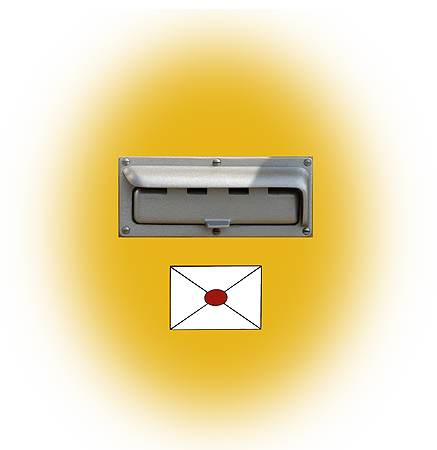At the beginning of the deportations, only a few of the victims were aware of their deadly fate.
It does not lack a bitter irony that the Hannoversche station, on the other hand, is a "station of hope" for tens of thousands of Russian- and Polish-
On the way to a better future from Eastern Europe to America, on the other hand as a "station of death" for thousands of Jews,
Who were sent from here to Eastern Europe in ghettos, concentration and extermination camps.
Thus, in the history of the station, important aspects of German and Hamburg history are reflected in rare urgency.
The NS officials probably chose him as a deportation station for two reasons.
First, the deportation preparations did not collide with the other, rather sparse use of the station.
Various loading operations with baggage were to be carried out, for which the loading devices of the station particularly suited,
And by connecting freight wagons or wagons with deportees from other cities, shunting was necessary,
Which would have hindered the operation at the other, heavily frequented stations.
Secondly, the absence of the train station shielded the deportations from the public,
Although the collection points of the Jews before the transport to the station were generally well visible and attracted attention.
Hundreds of bearers of the yellow star at Hamburg's main station would, of course, have called for even greater, more unwanted attention.
Hamburg's NSDAP Gauleiter and Reichsstatthalter Karl Kaufmann took the initiative and used a British bomb attack,
Who had made some 600 Hamburg homeless in the night of September 15, 1941, in order to obtain Hitler's plaque for a deportation of Hamburg Jews.
In a later letter to Hermann Göring well-known merchant:
"In September 1941, after a heavy air attack, I approached the leader,
To evacuate the Jews in order to allow at least to a certain extent the dwelling of the victims of the bomb.
The Fiihrer immediately responded to my suggestion and gave the appropriate orders for the transport of the Jews. "
On the 16th of May 1940 about 550 Sinti and Roma were arrested by the Hamburg Criminal Police on the first deportation, with further Sinti and Roma,
Who had been arrested in Bremen, Lower Saxony and Schleswig-Holstein, were interned in a fruit shed in the port of Magdeburg.
There they had to wait three days until on May 20 the first train rolled to Belzec.
Among those affected was the then eight-year-old Regina Böhmer, who was arrested with her parents and her seven siblings on 16 May 1940. She remembers the day of her arrest:
"In the morning at five, they took us from our apartment at Nagelsweg in Hammerbrook, on May 16, 1940.
They told my mother to pack everything we can wear and she should wear us. They said we had to be done then and then.
We were eight children and my parents. My father was there too. My mother was totally excited and always said 'fast, fast, fast'.
What she could do was pack her up. When we came out of the apartment, we already saw that from every corner came families from the apartments.
These were families with children, with the men, everyone was there. And when we came to the fruit shed, everything was already full. It was terribly crowded, but there was still more.
There were hundreds of them lying on the floor in this huge hall. And they told each family. We should get a house in Poland.
We should be resettled here. "
In fact, the 910 people were deported to Belzec in the Generalgouvernement, the official name for the Polish territories occupied by Nazi Germany.
Before the departure, the persons concerned had to hand over their personal papers as well as all valuables. They were only allowed to carry 50 kg of luggage.
At the Hannoverschen station, the Sinti and Roma were driven into freight wagons under the supervision of the criminal police, and deported to Belzec via Warsaw and Lublin,
Where a provisional concentration camp had been set up. Lotte Braun remembers the first days in Belzec:
"The next morning, the camp commander came out, we all had to make an appeal, and I know how today he said," You are all my prisoners.
And whoever dares to escape is shot like a great dog. It never got out of my head. "
Martha W., who had been deported to Belzec with her mother, brother and her two children at the age of one and two years,
Recalls the arrival and the reactions of the Hamburg police officers who had accompanied the transport:
As we got there, the SS was standing around the train, they were all there and drove us out of the wagons.
Many policemen also came along. There were two policemen in each car.
The policemen who had come to guard with us were standing there like the drowned poodles when they saw the SS and how they heard,
Like the SS commander, that was such a small man, who stood with his whip, and shouted, "If you do not obey."
Oh, what he said. It was terrible. And the police from Hamburg, they also stood there and were completely speechless.
I guess they did not know what they were doing with us in Belzec. "
The Sinti and Roma deportees from Hamburg had to fence themselves the area on which only a few sheds stood.
There were neither sanitation nor medical care, and the diet was also inadequate.
Under these catastrophic conditions, Belzec mainly suffered many children, including the son and daughter of Martha W.
"And one day we had to hire all those who had children because there should be something special for the children to eat.
Everyone got a bowl. There was bread in milk. That was what it looked like. This was especially for the kids.
Yes, and one child after another died in the next days. There was a scream, a lamentation, and a cry.
Shortly after the children had eaten it, they no longer had any air, they stifled. At first my little boy died.
I woke up in the morning. There he was already quite stiff. My daughter, who was two years old, died the same day the next day. "
In the night of August 2, 1944, the SS dissolved the "gypsy camp" and drove 3000 as non-working people,
Especially the elderly, sick and children, into the gas chambers.
The deportation of Hamburg's Sinti and Roma to the "gypsy camp" Auschwitz-Birkenau began on 11 March 1943,
When 328 Sinti and Roma arrived at the station of Hannoverschen the deportation train, which brought them in a several-tenth journey to Auschwitz-Birkenau.
Seven-year-old Elsenschmidt had previously been picked up by the criminal police with her nurses and taken to the hive in the fruit shed at the port of Hamburg,
Since she was also to be deported to Auschwitz as a "quarter gypsy". She describes her loneliness, confusion and fear:
"There was a huge room, a gigantic hall, where the detectives had brought me.
At that time, I had no idea what detectives were. They took the tram with me.
They did not come by car. By tram. The collection site was at the port. It was very big and I remember that a lot of people were walking about.
And I have seen cries of children and people, whom I had never seen in my life, Such as old Sinti women who smoked pipes and children,
Who looked for me as if they were twelve or so, who also smoked cigarettes. I had not seen anything like that in my life.
And some were oddly dressed. I had no idea what was going on. I was like Alice in Wonderland. "
Her father managed to get Else back out of the fruit shed:
"My nurses were completely excited, and when they adopted me, I was told that I was an 'Aryan' child.
I also had quite light blond hair and blue eyes. So they did not know what was going on when they were told that I was quarter-gypsy.
My foster father then immediately free of the work and has the whole day endeavored to find out where the me have brought and what the whole thing should.
I can not remember exactly how my foster father took me there in the afternoon. But suddenly he must have been there somehow and took my hand.
And we went back home. Again by tram. And at home he told me that this was all a mistake. 'Everything's all right now,' he said.
I went back to school the next day, quite normal."
The now eight-year-old Elsenschmidt, who was already in March 1943 from the Kripo for the deportation, was again arrested and brought to the fruit shed at the port:
Finally, we were put in straw with cattle trucks. My adoptibers had given me a small suitcase with clothes.
On the body I wore my best things. Then the train rolled. We drove many hours and had great thirst.
At the sliding door was a man with a uniform, who had a kettle and a trowel, one could go to him and drink water from the trowel.
The sanitary facilities were also close to the door. If an adult wanted to use it, someone else came along with a rug.
Of course, I got the same awful homesickness, but I had never been away from my adoptibers before. I can also remember the train journey.
It was terrible. Awful. That was very long. There was only straw. There was no water for washing. The train always stopped and then stood very long.
Maybe to allow other transports. We were allowed a maximum of one or two trips. "
Else Schmidt came to Auschwitz, where she was deprived and tattooed of her luggage and clothes.
The journey in the cattle caravan, the arrival in Auschwitz, and the things she saw there brought a deep shock to her:
"First of all, it went to a barrack, where it was so madly overcrowded, I was so shocked. The barracks were so terrible.
I had never seen this before. I came from a good household. I had never seen so many people. Scraps were hanging down on them. Some were like
Skeletons were so thin and the eyes were very deep. Dreadful. There is no word to describe it. And I was still a child.
All alone between all the others that were strange to me. "
In August 1944 Else Schmidt was deported from Auschwitz-Birkenau to Ravensbrück concentration camp, where she was dismissed at the end of September 1944,
After which her adoptive father had successfully tried to bring her back to his family.
How many of the 21 children and five adults who were deported to Auschwitz-Birkenau on April 18, 1944 are still not known.
The so-called evacuation order:
With this date, you and the relatives listed are subject to special exemptions for the duration of the transport.
You and the assets of your abovementioned dependents are considered confiscated. "
All those who received this letter had to arrive at one of the five "collecting points" in the middle of Hamburg.
For transport to Lodz, this was the provincial gang at Moorweidenstraße, near the Dammtorbahnhof.
To those who made their way to Moorweide 36 in October 1941,
Belonged to Lucille Eichengreen, who was still called Cecilie Landau, with her widowed mother and her five-year-old sister Karin.
The 16-year-old at the time of deportation remembers:
"We had heard rumors that about 1200 of us were to be evacuated to Litzmannstadt.
But nobody seemed to know why at all. It did not matter, we had no choice.
We packed together what we were allowed to take, the rest we gave to friends and Jewish neighbors.
Hardly anyone wanted to accept what we had to leave behind; They knew that they too would be one day's turn.
Our friends, the Fromm family, accompanied us to Moorweidenstrasse, to the building of the 'Provincial Hall for Lower Saxony'. We hugged each other. "
After Lucille Eichengreen's mother had starved to death in the ghetto of Lodz and her sister fell victim to a raid and a deportation to the Chelmno extermination camp,
It was deported to Auschwitz in August 1944, later returned to Hamburg to the outskirts of the Neuengamme concentration camp on the banks of the Dessau.
There she was used, malnourished, sick and weak, in the removal of bomb damage in Hamburg's inner city and in the surrounding area.
Lucille Eichengreen experienced liberation in Bergen-Belsen and now lives in the USA.
The deportation order also contained a detailed "Reiseliste", which list all the permitted items that could be contained in the handbag and in one suitcase or backpack.
The Jewish community was forced to participate in the deportations, prepare them and participate in the implementation.
She tried to make the best of this compulsion situation.
Thus, the municipality ensured that the transports of 1941 were equipped with foodstuffs and medicines and equipment such as tools and kitchen equipment.
Ingrid Wecker remembers what this means specifically:
"And then it was in the middle of the night, we had to go to the Hannoverschen station.
And Mr. Staake, who had either belonged to the Jewish Community car, or had driven it somewhere, he had an old tempular car, so on three wheels.
And then we always have with these packages and everything to the train, we have always brought to the Hannoverschen station.
We had a special permit, and we just prayed that there would be no flight alarm. That could be so.
And we took it all to the Hannoverschen station. I've always been asked, 'Is that a passenger train? These were only freight cars. "
I know it. There was a passenger train in the front, and two or three luggage trolleys were stretched behind. But the people were not there yet. They were gathered in the moor pasture.
Yes, the first transport has left. "
Hubert Riemann, the son of a Jewish mother and a non-Jewish father,
In November 1941 he accompanied a friend of his family to the collecting point at Moorweidenstrasse, from where they were deported to Minsk via the Hannoverschen station:
"A well-known family, with whom we were close friends, who lived in Heinrich-Barth-Straße 8.
And the family consisted of father, mother, two daughters, who were about the age of nine and eleven.
The four people I took from the Heinrich-Barth-Strasse into Moorweidenstrasse, and this has become very sour.
That can be said. The girls who had their schoolboy with her and her dolls in her arms. And the adults wore their suitcases.
My sister had previously labeled the suitcases with white color with deportation number and address, home address.
And the man had gone to the guard a morning before, and had to give his home keys. And he has still exchanged his bike with me, which he had rather new, against my very old one.
It always had to be the number of the previously surveyed questionnaire. But there was still a small chance that you could exchange.
I would never have done it myself, but he said, 'Come, Hubert, you take it. We exchange it.
Heinz Rosenberg's father also delivered the keys to the next police station, and the whole family set out for the station:
"When we reported in the old lodge on Moorweidenstrasse,
Our suitcases were first examined by members of the Judenrat and the Gestapo, and then placed in a storage room.
Then we had to line up either to the right or to the left after the initial letters of our names.
There were four tables on each side and behind them a member of the Judenrat and a Gestapo or SS man.
At table no. 1, one had to give his name, date of birth and address. A card was then taken out of the file, and the SS man traced the name on a long list. "
After they had handed over all the money, letters and personal valuables, as well as the previously completed multi-page declaration of assets, they were counted and spent the night in the lodge house.
The next morning they were transported in closed police cars to the Hannoverschen station. Claus Göttsche, the "Jewreferent" of the Hamburg Gestapo, had named as the exact departure date:
"The train departs at 8:15 am at 10:52 am from Hannoverster station and is scheduled to arrive in Minsk on the 10th of November 1941."
Heinz Rosenberg remembers the situation at the station:
"There was a train with 20 passenger and five freight cars.
The passenger cars were old, but they had windows and doors, but they could not be opened from the inside.
Each 50 persons came into a car, each place had to be occupied. The procedure took many hours.
Finally, the SS appointed a Jewish transport manager, Dr. Frank, who was responsible for each car.
One of them was me. I got a yellow armband and when the train stopped, I wanted to distribute food and water.
Even before we left Hamburg, three trucks had to be distributed with food, as well as special supplies from the Jewish community. "
In the unheated, overcrowded waggons, there was great unrest during the three-day trip, as no one knew what to expect on arrival.
Heinz Rosenberg and his family survived the severe winters, the constant hunger, the force-consuming forced labor as well as the abuse and killing in the ghetto,
Until they were sent to a nearby camp in September 1943. By the end of the war he had another eight concentration and forced labor camps.
When he was liberated in Bergen-Belsen in April 1945, Heinz Rosenberg was 23 years old.
Ingrid Wecker, the helper of the Jewish community, experienced the last hours of this group in the community center in Hartungsstraße.
She recalls the treatment of people by the Gestapo:
"This meant that you had built huge tables in the gym, and the Gestapo had every single suitcase opened.
I had to do it, I was a helper.
And then they looked, and now, when a neighbor had added a candy to her, when there were waggons, if only fur-like in them,
Woolly things were in it, then it was said, they do not know that they are allowed to have no more and have then shouted, the SS people. They were SS men.
And under the tables stood huge pans or wash baskets, as it was said, the NSV too. And I had to put all the stuff down there.
And if the times did not hint, I took the things and put them up again.
You know, when you are eighteen years old, so I think my age would not make me think of it,
Maybe you're unhappy about ten candies or something. But you do not think. Just think of this injustice. "
"Evacuation" was about cruel euphemisms. Eva Pfeiffer-Haufrect, who, as a nurse, looked after the people immediately before the deportation, remembers:
"We did not know what was happening. We initially thought that the people were resettled.
Of course, we found that quite annoying enough when the 'nem nice place to move out with a small box and then come to a camp to work.
That was the idea we had. This was also spread by the Gestapo of course.
And then one day a German soldier appeared in the hospital with a nervous breakdown in the door, and began to sob,
That he would have to shoot at Jewish women and children. And then we realized that they might do more than they would relocate. "
At the moor pasture almost overnight S-lanes passed, from which curious passengers watched the happening.
Under the applause of hulking Hamburgers, the assembled Jews were brought to waiting trucks.
The deportations were not a secret operation, but took place on the bright day. Well visible and in public.
H. Frielingsdorf, a Hamburg master craftsman, who had no exclusive sources of information and had no contacts with Jews, wrote in his diary on 13 November 1941:
"What you hear in the Jewish question: They are to leave all their homes, give the key to the police.
They are allowed to carry all two handcuffs with stuff and then be sent to Russia. These are German acts.
If in the future special reprisals are imposed upon the German people for the extermination of the Jews, then the German
People at least once, when it says that the Jews came.
Hitherto the German people expressly and deliberately pushed all Jews and Jews to blame as Jews, contrary to all honesty and love of truth. "
Frielingsdorf's remarks made it clear that he deplored the deportations, for which he explicitly held the responsibility not only for the Nazis but also for the "German people."
Representatively, Frielingsdorf was certainly not with his opinion.
Thus part of the population of Hamburg accompanied the deportations with demonstrative, public approval as the Jews were driven in front of the lodge building by a clapping crowd on trucks.
With expressions such as "Now they march into the ghetto" or "Is also the highest railway, that they dripped, all but useless eaters!" Or "Well the pack is swept!"
While a part of the population openly agreed with the deportations, the majority of the non-Jewish Hamburgers were rather unobtrusive.
Uwe Storjohann describes them in his memoirs as a "dumb majority of embarrassment, indifference, blunted subordination"
A "stable Union of non-captains, nurses, head-nucks, path-listeners and blind persons."
The open threats of Nazi propaganda against friendships and sympathy,
The growing retreat to one's own concerns in the wake of increasing war burdens
And the almost complete social isolation of the Jews years before the deportation should have contributed to this basic attitude.
Only a few hamburger were attached to deportees, or they tried to prevent the removal in individual cases.
Ingrid Wecker reports that Hamburg private individuals or companies had anonymously donated larger stocks of food for the deportees:
Bread, butter, sausage, sugar, crates with wine, chocolate and sweets for the children.
The Hamburg banker, Cornelius von Berenberg-Gossler, was one of those who, in numerous individual cases, strove for Jewish citizens.
In the diary of the mayor Carl Vincent Krogmann other persons are mentioned, who worked with him for individual persons:
The Protestant pastor Seyfarth even addressed Himmler in a letter to prevent the removal of a 93-year-old lady.
The Jewish entrepreneur Edgar Eichholz reported in personal records about the futility of his efforts and the consequences for Seyfarth himself:
"6 months after his request, he received an answer in the form of a summons to the Gestapo in Hamburg.
There sat in a club chair a young SS man who did not even offer a chair to the old gentleman so richly decorated with orders and honors.
They drew him terribly together, and told him that it was inconceivable for a German to be able to work for Jews. On his remark,
That the old lady of almost 93 years had really done nothing to anyone, he was told that this was not a lady, but a Jew-woman!
Since Pastor Seyfarth's request, thank God, one day before the speech Dr. Göbbels, in which the Jews, as enemies of the state, 1,
This time we should be left with a reprimand and the indication that he should never again come into contact with Jews,
So far as such was still present, otherwise it would inevitably be immediately put into a concentration camp. "
On 19 July 1942, the Hamburg craftsman, Frielingsdorf, noted in his notes:
"In recent weeks, the last Jews have been transported to Hamburg, where they do not know.
But creepy stories are circulating about the people. They are to be killed in masses of open graves or in the open field with women and children by mass executions.
One can scarcely hear of such atrocities, it is a bad thing to hear of it.
Our deeds are crying to heaven, and the German people, that these misdeeds are foolishly telling and frightening, is this innocent of our masses?
No, it is not, only among a people with such a critical attitude can such brutalities occur. "
Between 1941 and 1945 in Hamburg hardly a day passed, on which not possession of Jews was publicly auctioned.
The total number of purchasers should have been over 100,000.
In public auctions, a central principle of Nazi racial policy manifested itself:
According to their highest position in the racist hierarchy, "Aryan people" should be systematically favored and materially privileged at the expense of Jews and "foreign people".
|
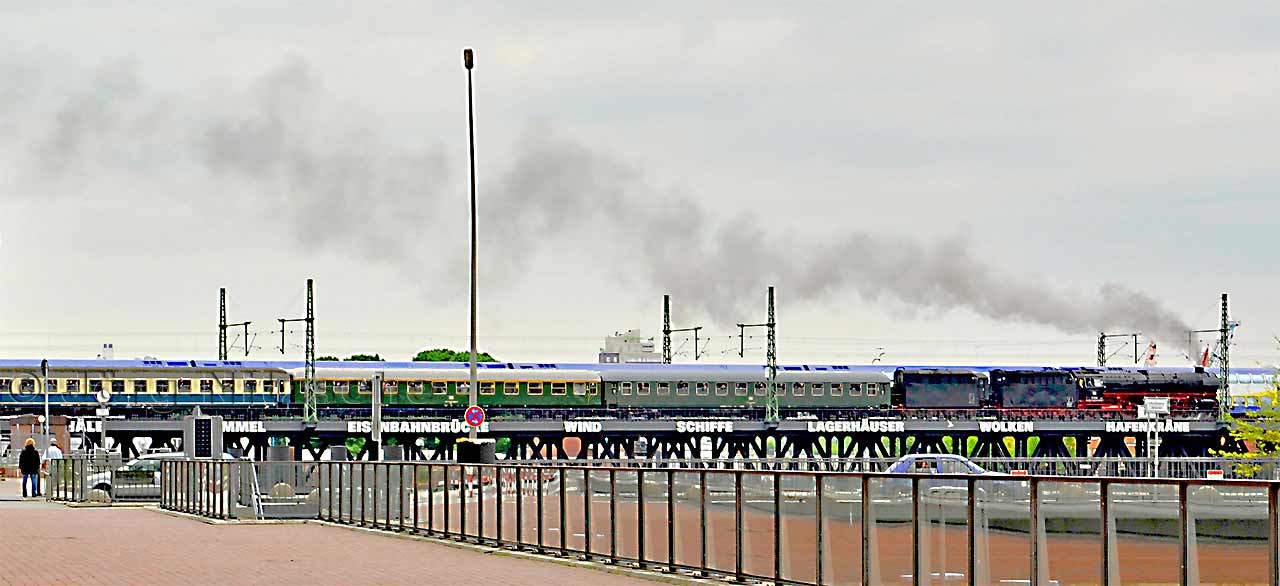 Drive over the Oberhafenbrücke
Drive over the Oberhafenbrücke  Drive over the Oberhafenbrücke
Drive over the Oberhafenbrücke 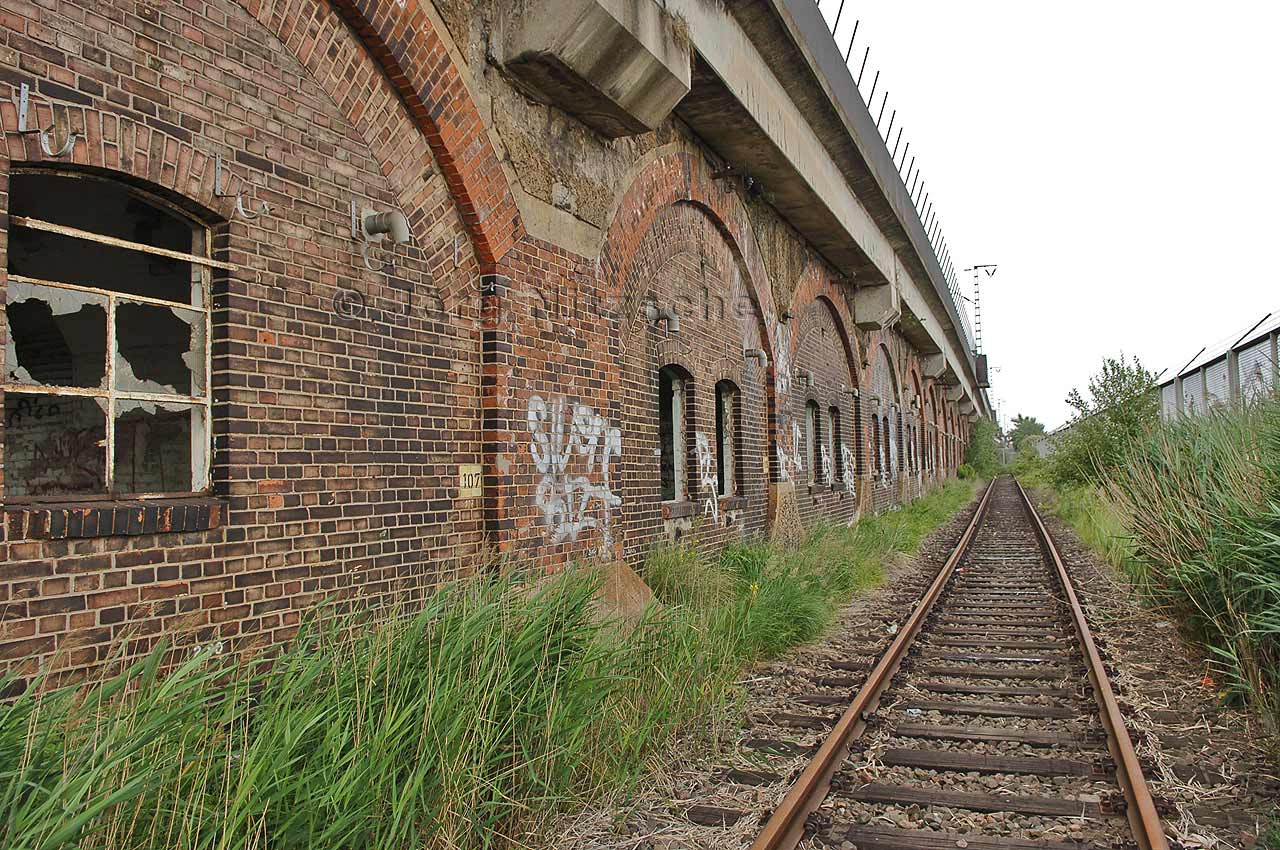 The Pfeilerbahn viaduct with some of the 126 stone vaults in the direction of Elbbrücken (Versmannstraße).
The Pfeilerbahn viaduct with some of the 126 stone vaults in the direction of Elbbrücken (Versmannstraße). 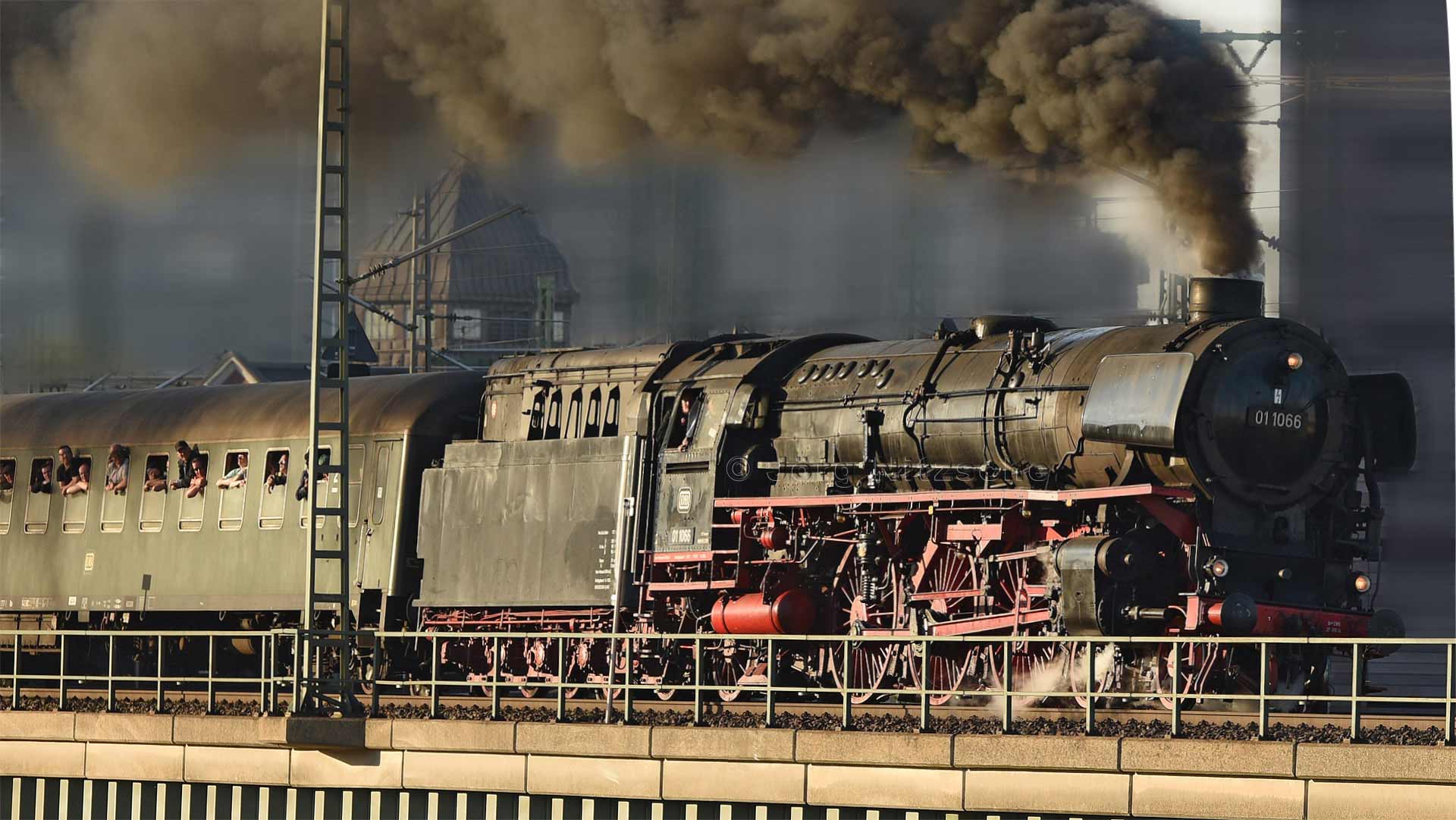 The train is here at the height of the former Hannoverschen Bahnhofs
The train is here at the height of the former Hannoverschen Bahnhofs 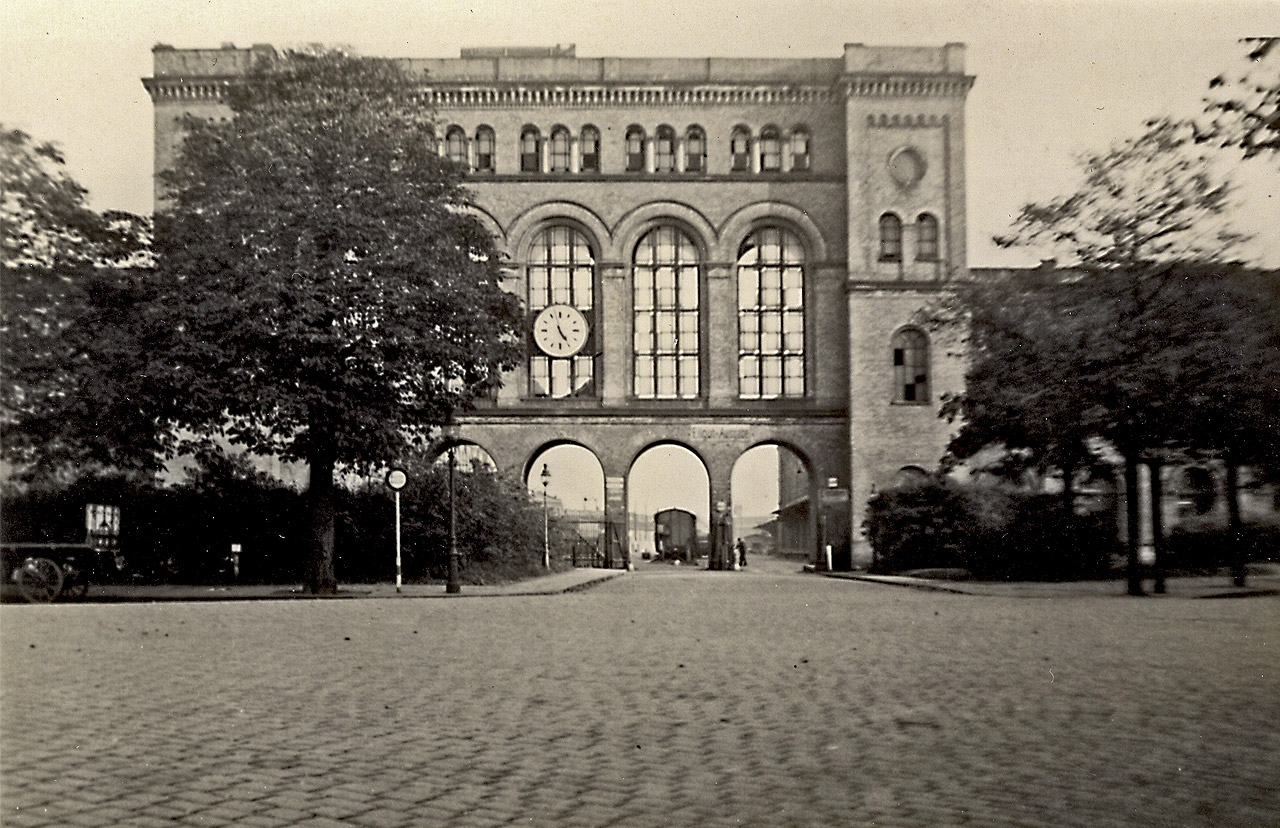 View from Lohseplatz onto the imposing portal of the Hannoverschen Bahnhof
View from Lohseplatz onto the imposing portal of the Hannoverschen Bahnhof
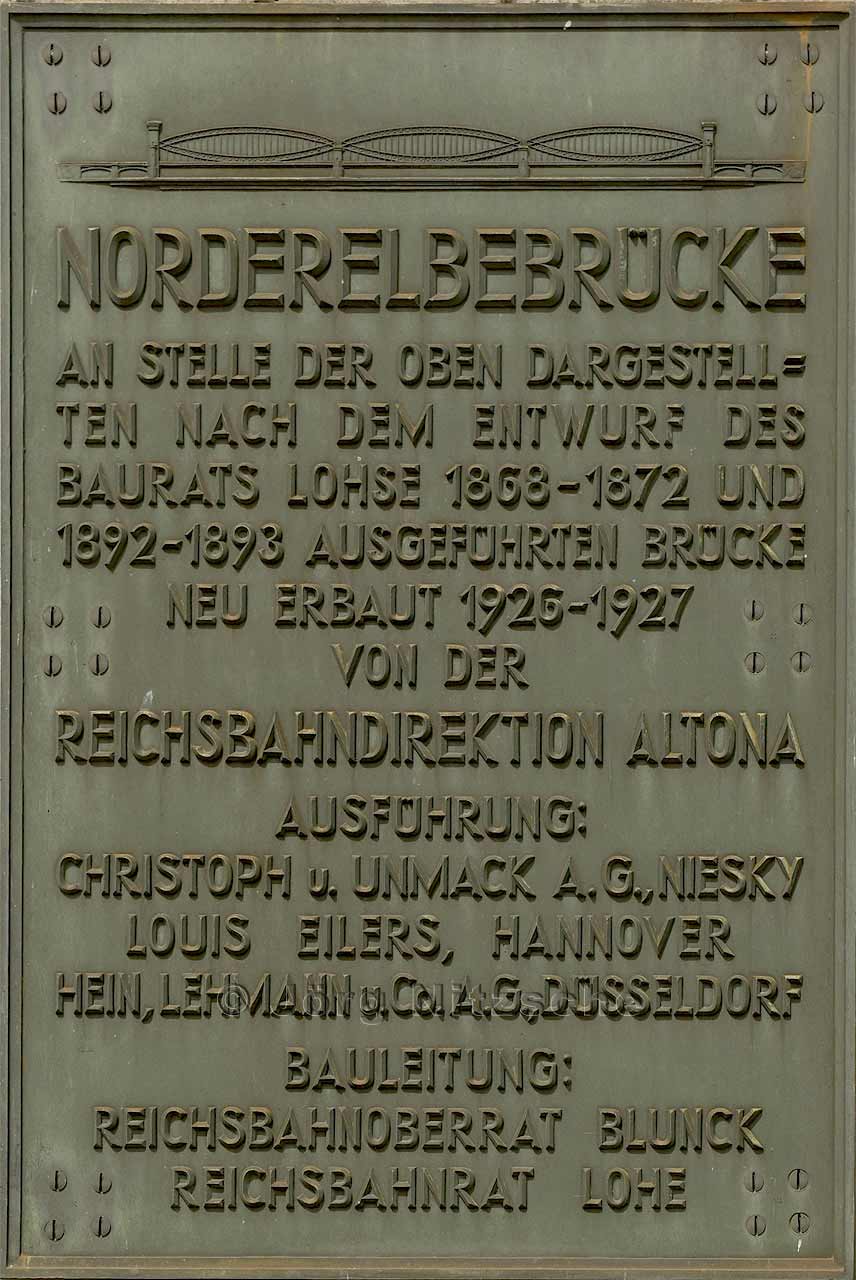 Memorial plaque for the construction of the Norderelb bridge
Memorial plaque for the construction of the Norderelb bridge
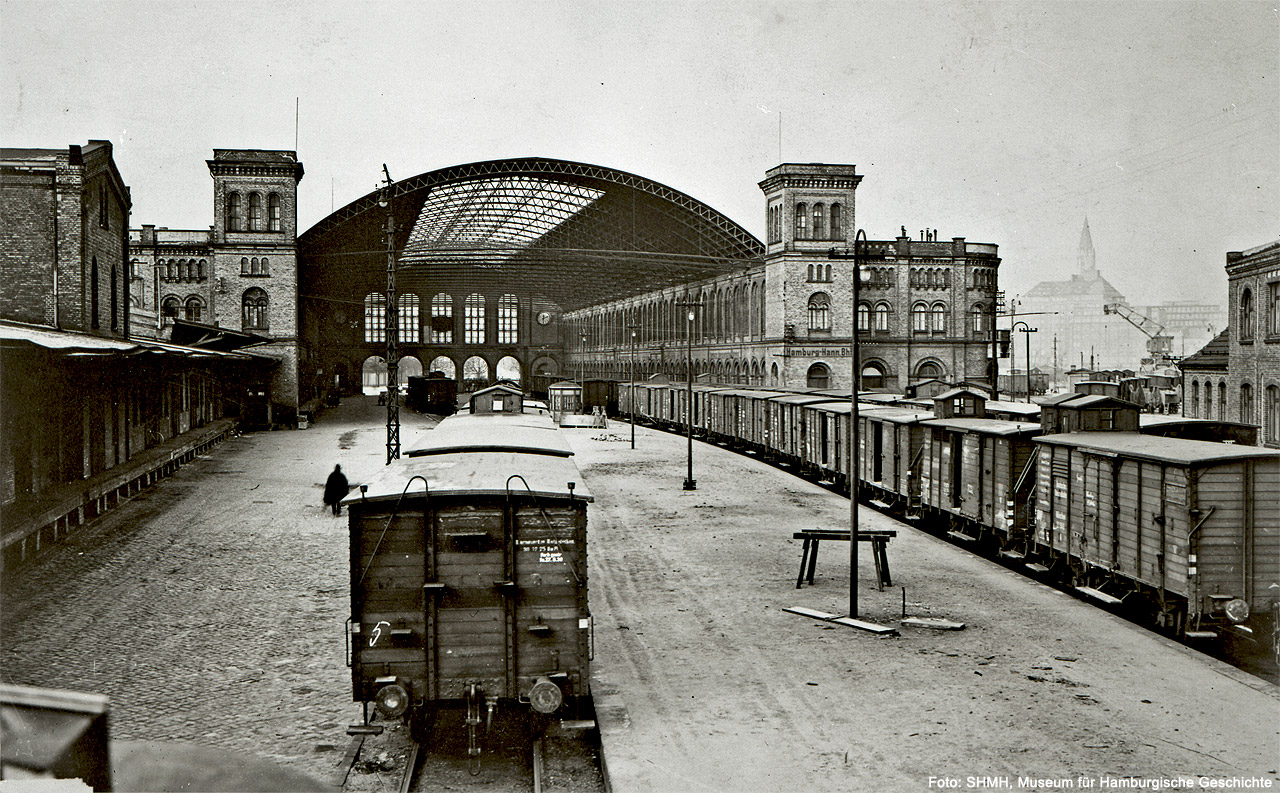 The platform of the Hannoverschen Bahnhof in 1931
The platform of the Hannoverschen Bahnhof in 1931
 The same view direction today.
The same view direction today. 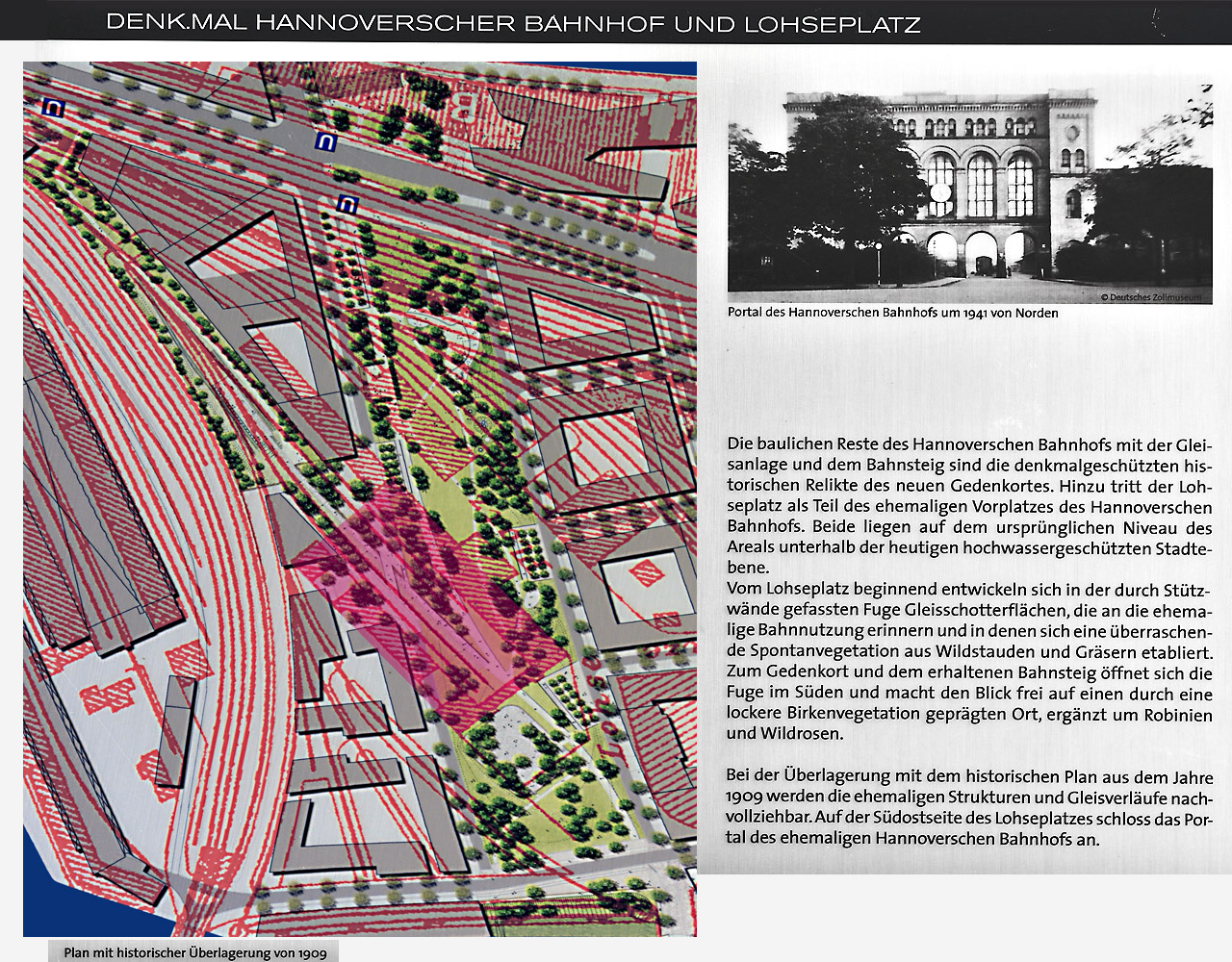
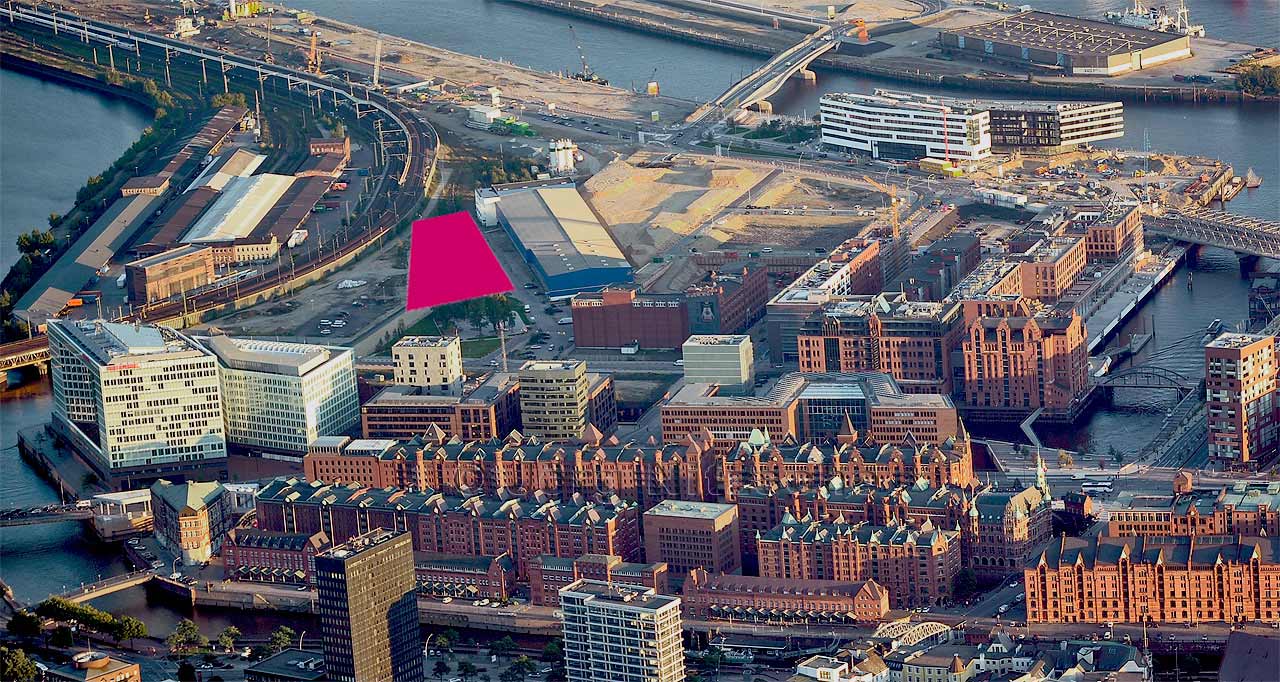 Speicherstadt with a graphical display of the location of the former Hannoverschen Bahnhofs
Speicherstadt with a graphical display of the location of the former Hannoverschen Bahnhofs 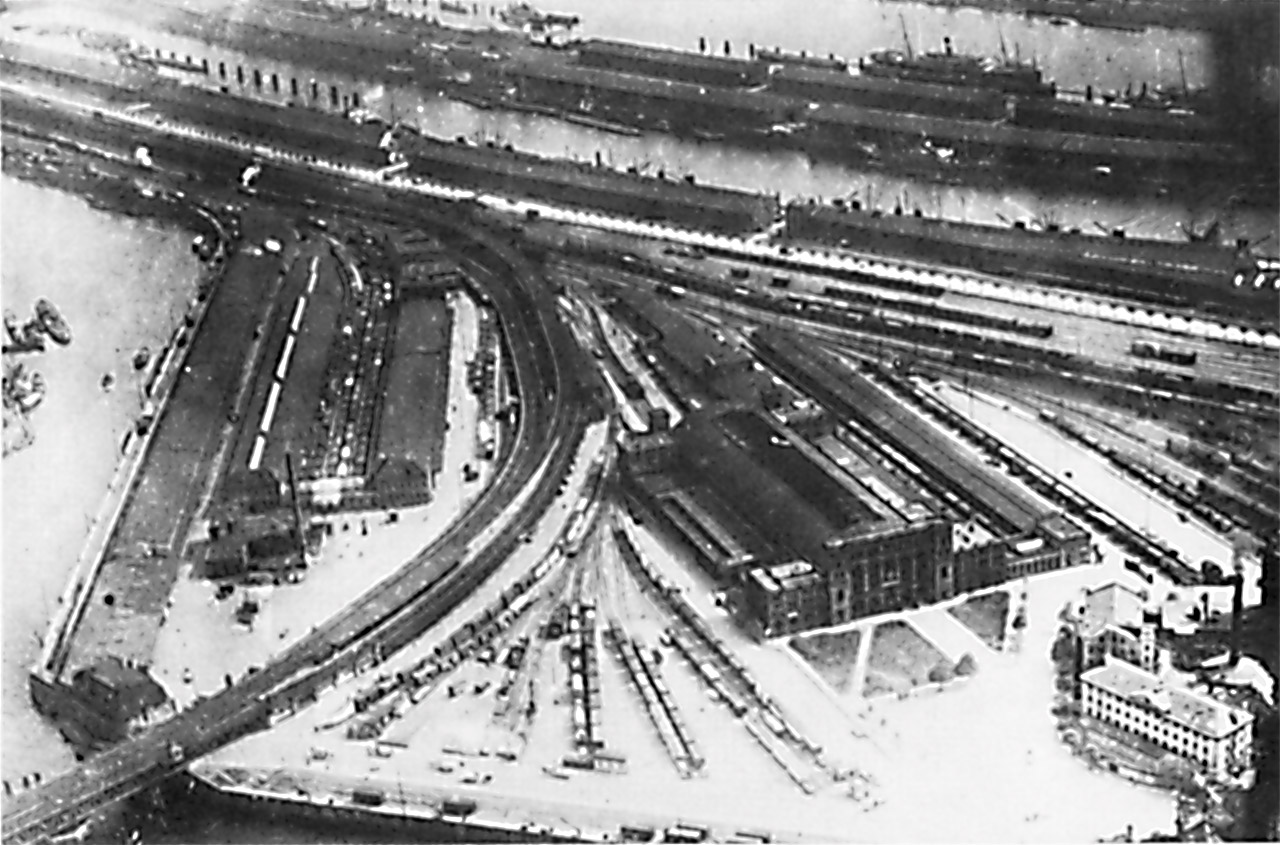 Der Hannoversche Bahnhof between Oberhafen und Baakenhafen
Der Hannoversche Bahnhof between Oberhafen und Baakenhafen 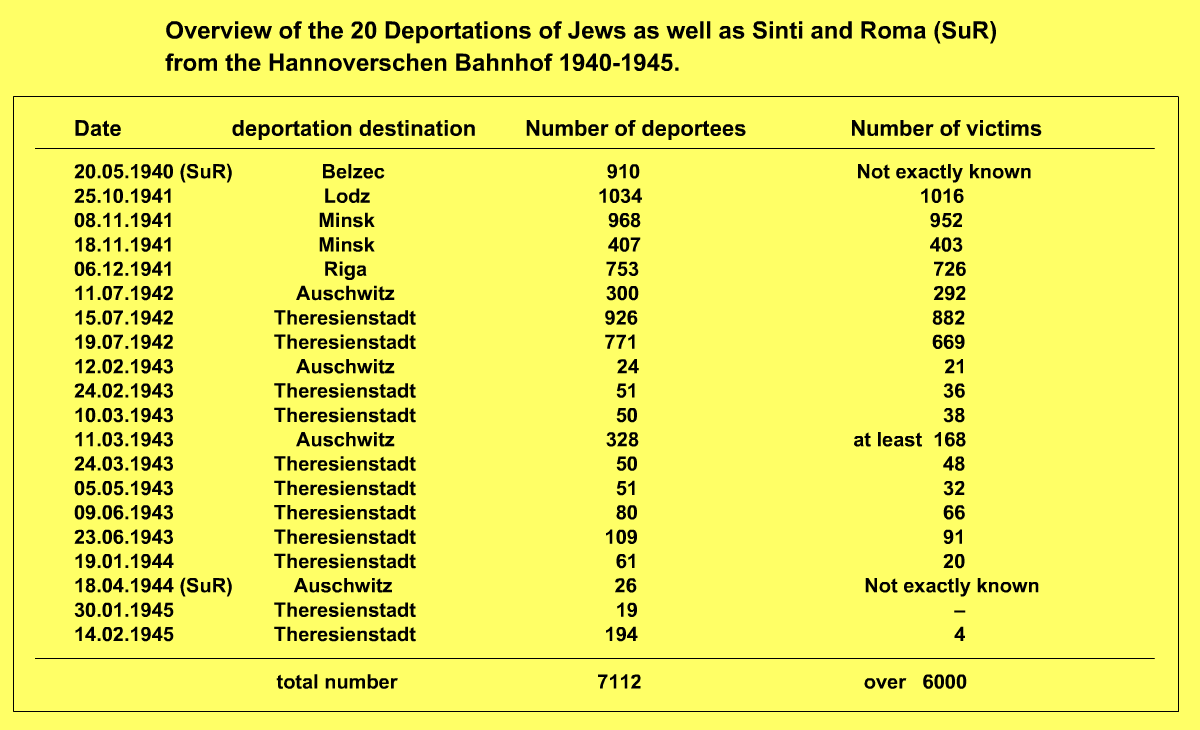
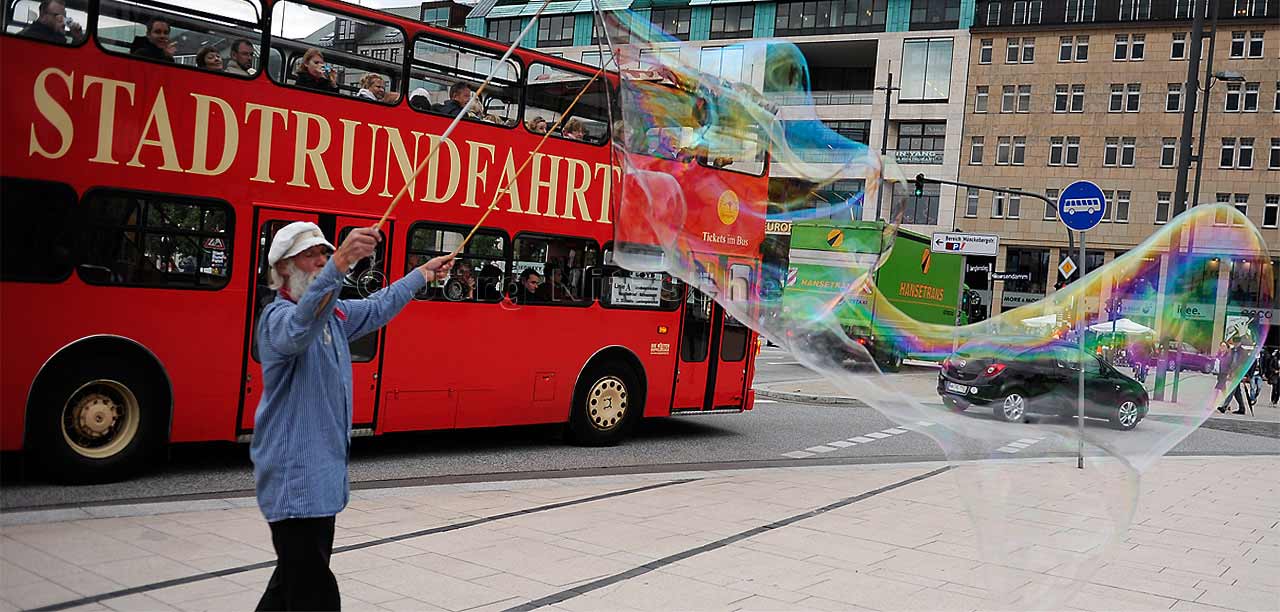
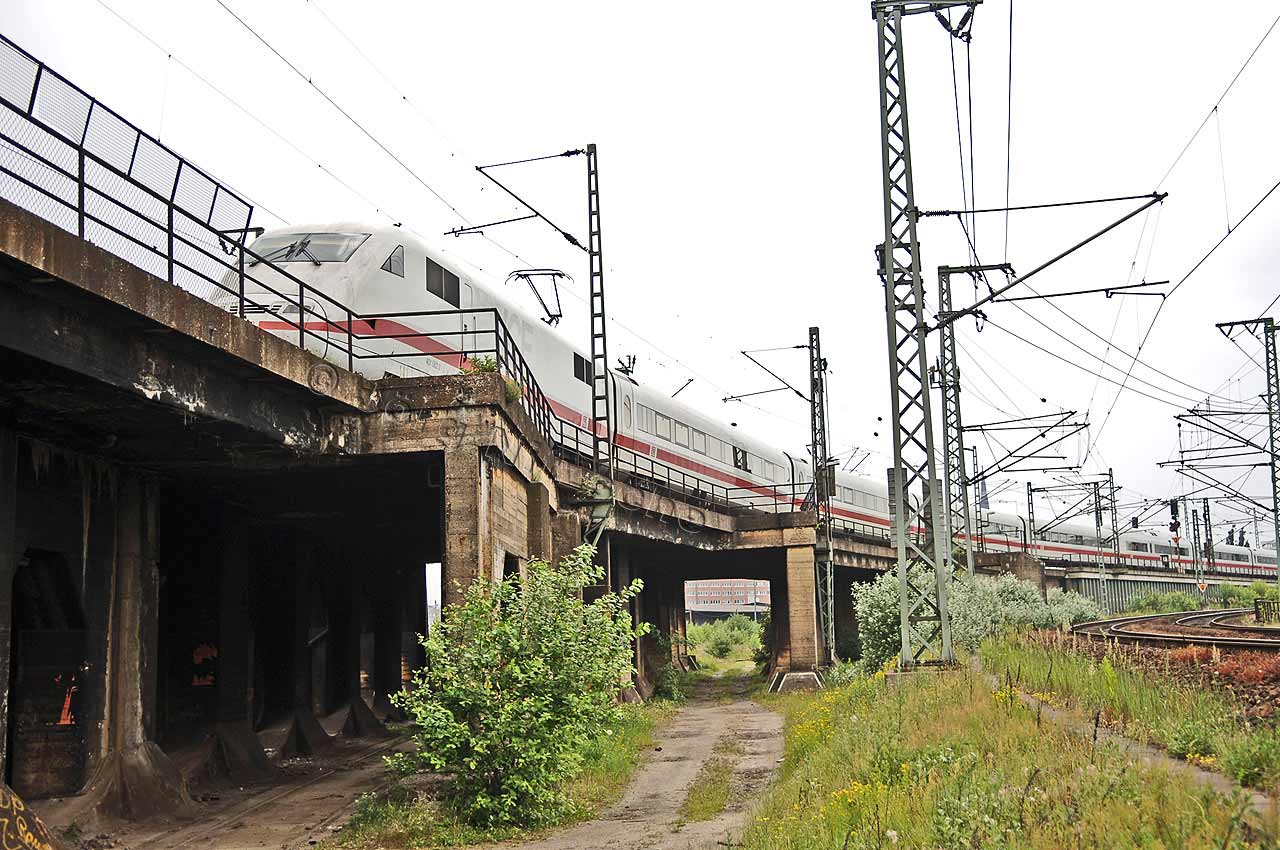 View of the pier and underpass to the railway tracks of the Hannoversche station.
View of the pier and underpass to the railway tracks of the Hannoversche station.
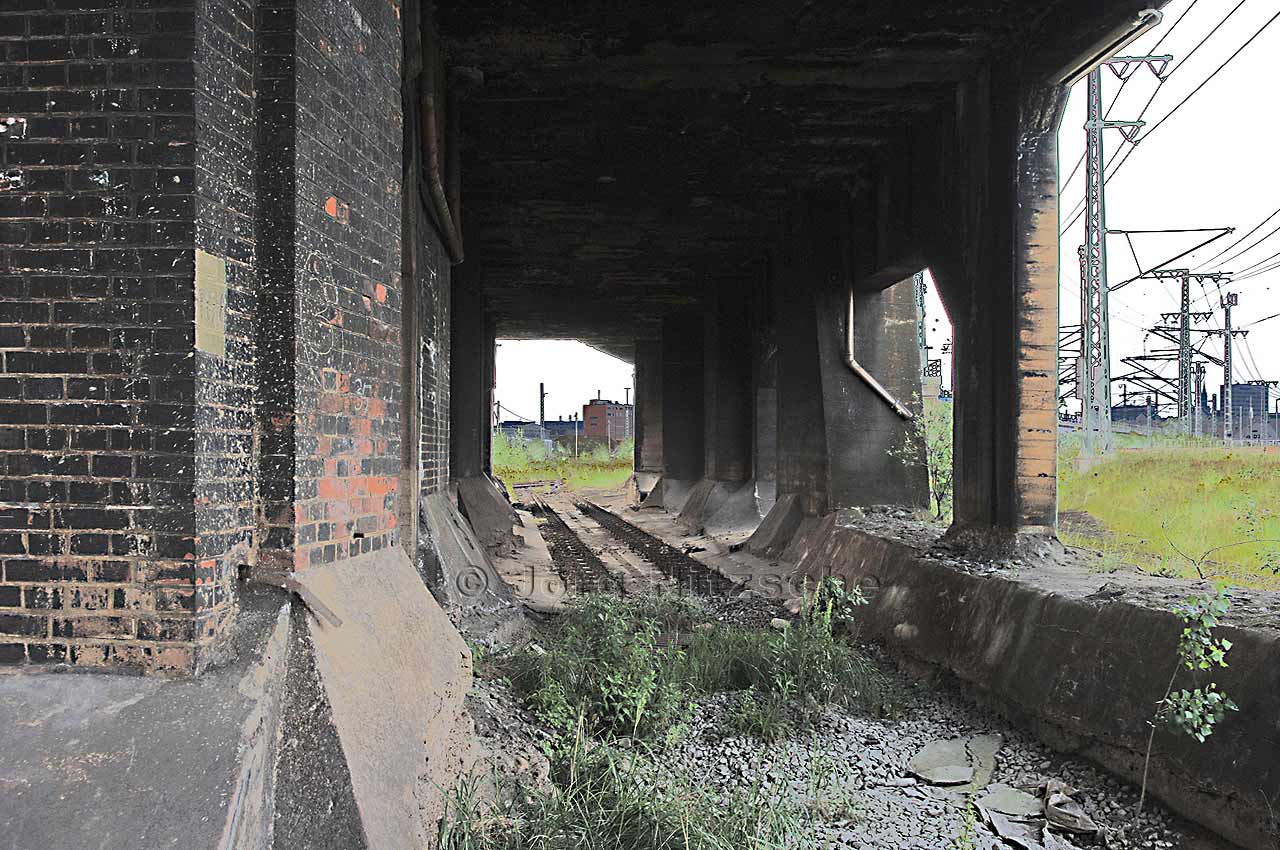 Passage to Hannoverschen Bahnhof.
Passage to Hannoverschen Bahnhof.
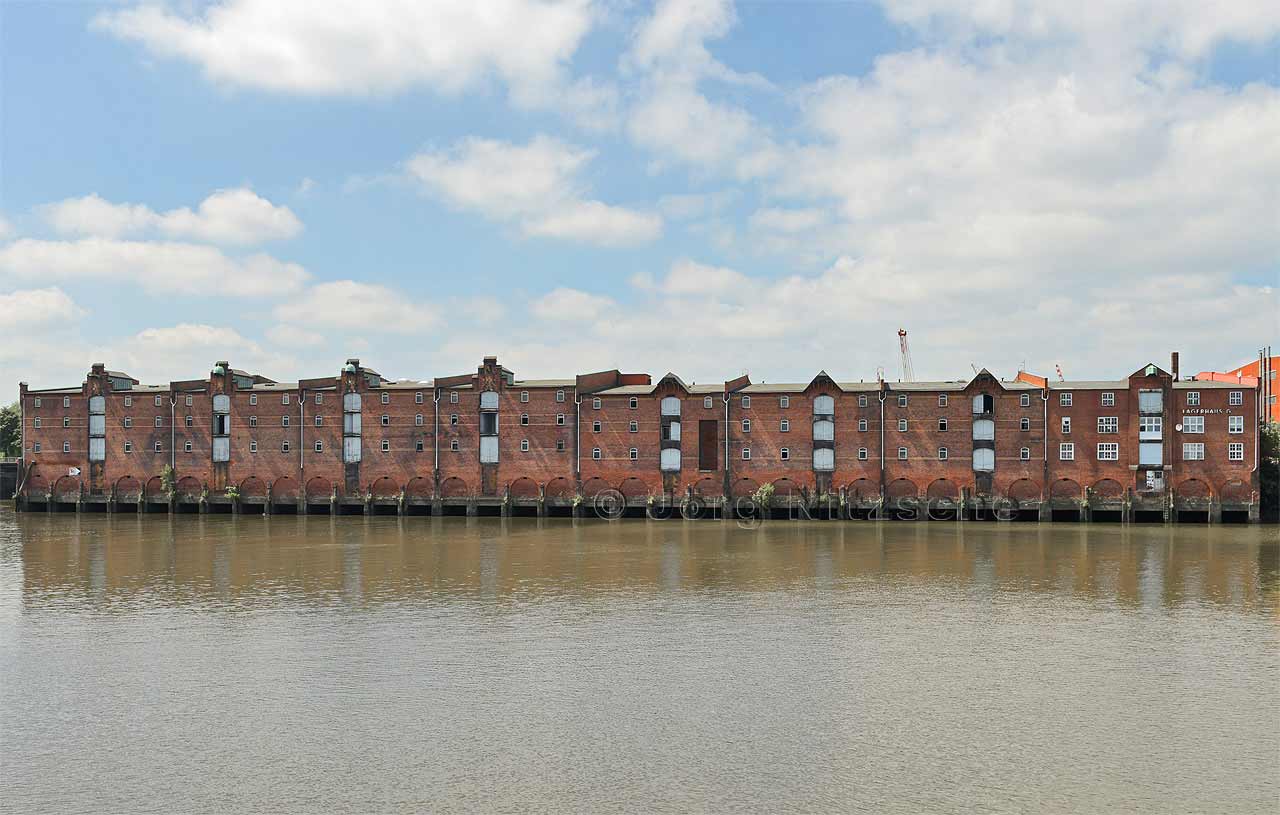 The warehouse G is located directly at the Saalehafen and also has a story to tell.
The warehouse G is located directly at the Saalehafen and also has a story to tell.
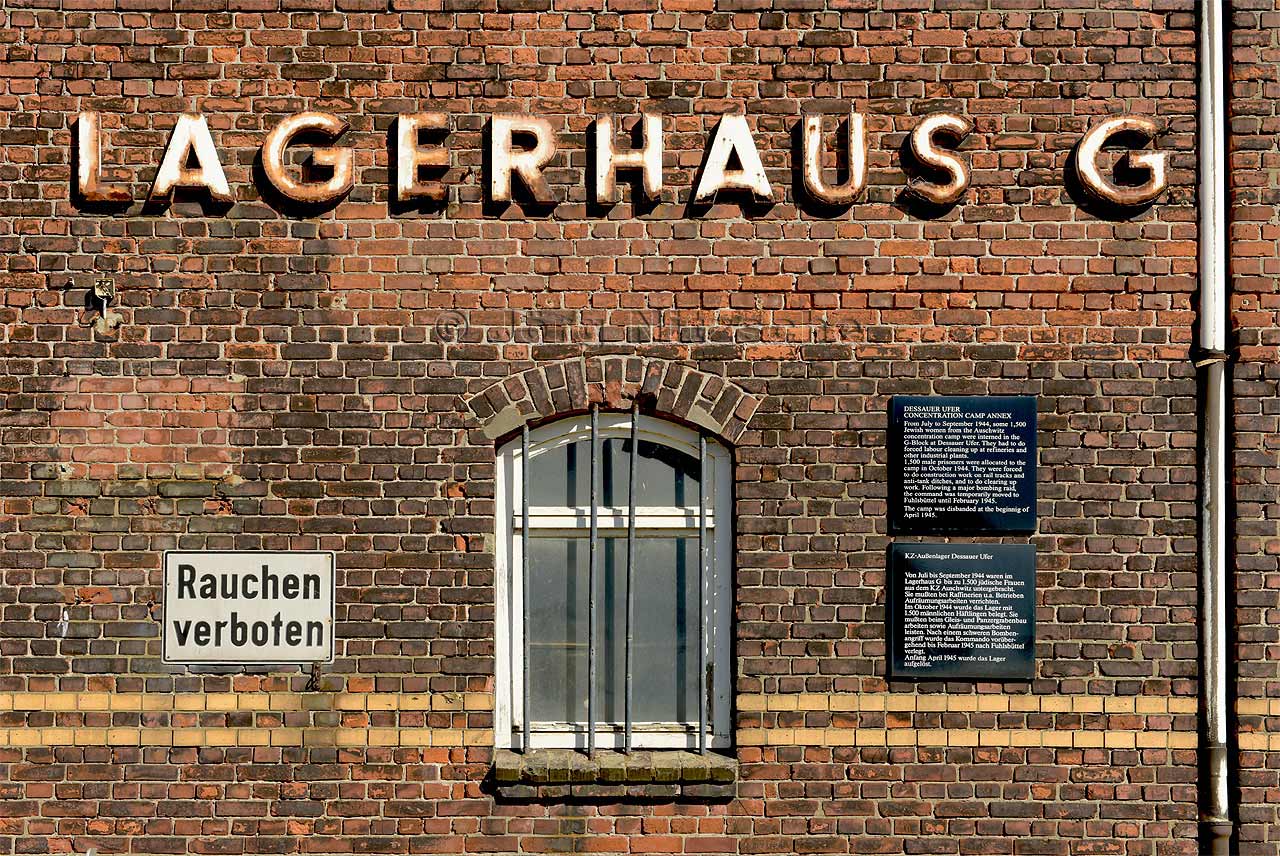 The Lagerhaus G in Dessauer Straße also has a story to tell.
The Lagerhaus G in Dessauer Straße also has a story to tell. 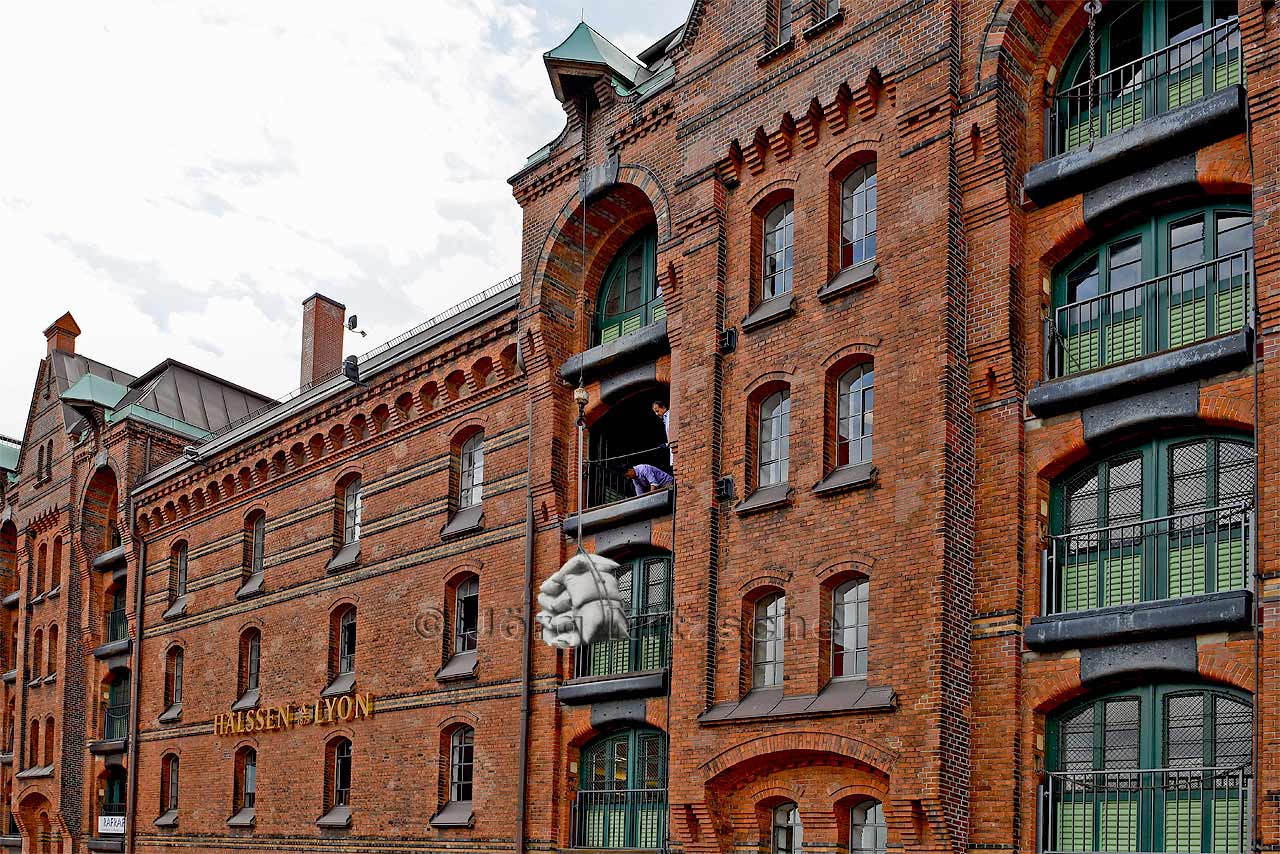 Thus, the goods were formerly hoisted into the storehouses of the Speicherstadt.
Thus, the goods were formerly hoisted into the storehouses of the Speicherstadt. 



